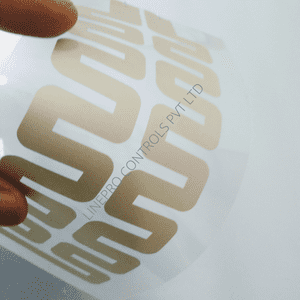
Flexible heaters are a great medium to get the heat needed in specific locations, whether it is for industrial, commercial, or aerospace purposes. Flexible heaters can be used in multiple ways, including keeping food warm in cafeterias or eliminating risk of condensation in aerospace control panels. They can also be used to regulate temperatures in medical equipment.
These flexible heaters are unique because they can be bent without compromising their heating function. They are also extremely thin. This allows the heater to fit between parts which are particularly inaccessible without being displaced or rubbed off by other components.
There are limitations on the materials that can be used for heating applications. These include the temperature limits and the breaking point of the bend radius. These limitations allow customers to design heaters that fit the application and ensure a smoother manufacturing process.
Bending Considerations in Flexible Heaters
Flexible heaters are made using one of the two materials – silicon rubber or polyimide and Polyester or Polycarbonate substrate. The thickness of the materials will determine how much a heater bends. With the etched foil heating elements, polyimide flex heaters can be as thin as 0.0005″. The polyimide can be bent around multiple curves within the same application because of its thinness.
Silicon rubber flexible heaters are thinnest when used with etched foil elements. They can also bend to 0.030 inches using wire-wound elements. Rubber tends to bend less as it’s thickness increases.

Polyimide flex heaters and Printed heaters are primarily used for curved or bent surfaces. Silicon rubber is better suited for flat surfaces. Linepro has developed an exclusive of flexible heater which is transparent and suits transparency or glass heating applications.
Temperature Limits for Flexible Heaters
Flexible heaters can achieve a wide range of temperatures depending on the materials and elements used. The heater’s temperature requirements will vary depending on the application and the ability of the application to draw heat away from the heater and distribute it evenly. This heat transfer prevents the heater from overheating or malfunctioning.

Silicon heaters operate within a range of -70°F to 400°F. These heaters are suitable for medium-to-high temperature ranges, but they can fail if the environment is below the mentioned range.
The minimum operating temperature for polyimide heaters can be as low as -320 F or as high as 392 F. These heaters are ideal for very low temperatures such as spacecraft and satellites to maintain electronics and instrument panels functional.
Size Limits for Flexible Heaters
Flexible heater is not just made of silicone rubber or polyimide, but there are other components too. It also needs solder tabs and wire connections to connect the heater. It is important to consider which types of elements are being used.
For both silicon rubber heaters and polyimide, etched foil elements can be no larger than 10″ x 70″. We cannot make them larger or the heat won’t distribute to all areas of the flexible heater. The maximum dimension of wire wound elements is 36″ x144″. These elements are used only for silicon rubber heaters. They can also be made for larger applications.
A heater with a small size can be a problem if the customer wants it. This is because the thermal path through the material must be large enough to allow heat to transfer evenly throughout the heater. Both silicon rubber and polyimide have sizes that are less than 1/2 inch. However, there must still be enough space to connect the solder tabs or other electronic components to power the heater.
Heat losses in certain areas of larger flex heaters can be a concern due to cut-outs or other factors that could lead to heat sinks. Multiple temperature variations can be dangerous for the application and could cause it to fail. To ensure even temperatures across the entire flexible heater, it is important to consider the thermal patterns of the wire wound elements and the etched foil elements.
Material Limitations for Flexible Heaters
Both silicon rubber and polyimide have low off-gassing. Both materials can be used in vacuum applications. They are also ozone and moisture resistant. The presence of acids like sulfuric acid or phosphoric acid can adversely impact silicon rubber. It is also important to avoid using silicon rubber in areas where there are motor oils, mineral oils, or transmission fluids. These acids and oils can cause the material to dissolve.
Summary
Each application has different heating requirements. This is due to the size and materials used, as well as the period for the heat to be applied continuously. These factors, along with how the heater will be powered, will allow customers to determine what attributes are needed for their heaters.
Talking to a manufacturer of flexible heaters during the design phase can help you determine how to make a heater that heats the application correctly and doesn’t experience any adverse conditions that could affect its continued use.

